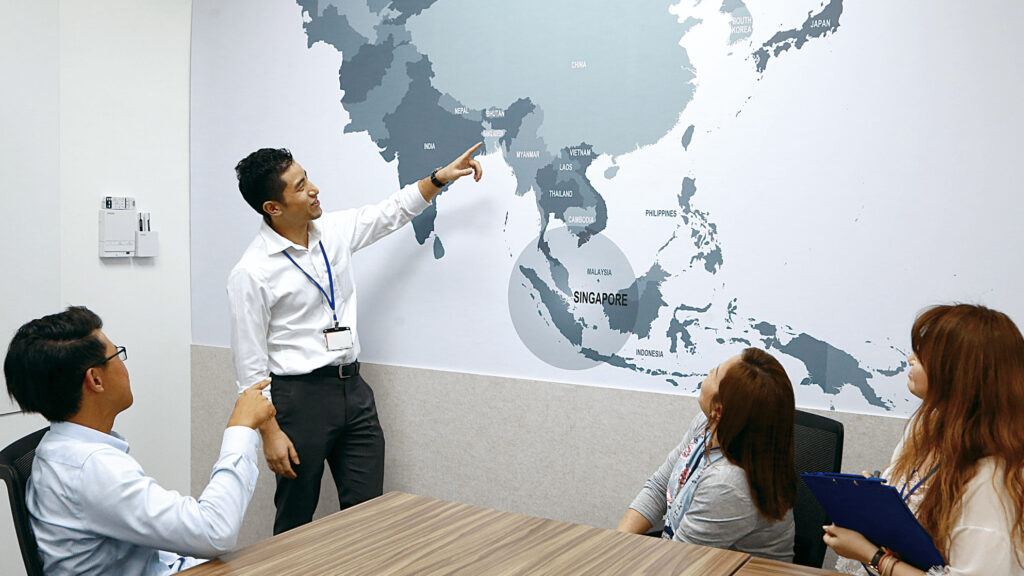DAIICHI JITSUGYO ASIA PTE. LTD.
- HOME
- Success Stories
- DAIICHI JITSUGYO ASIA PTE. LTD.
Mutual utilization of information across countries
to enhance the organizational strength of the entire global network.
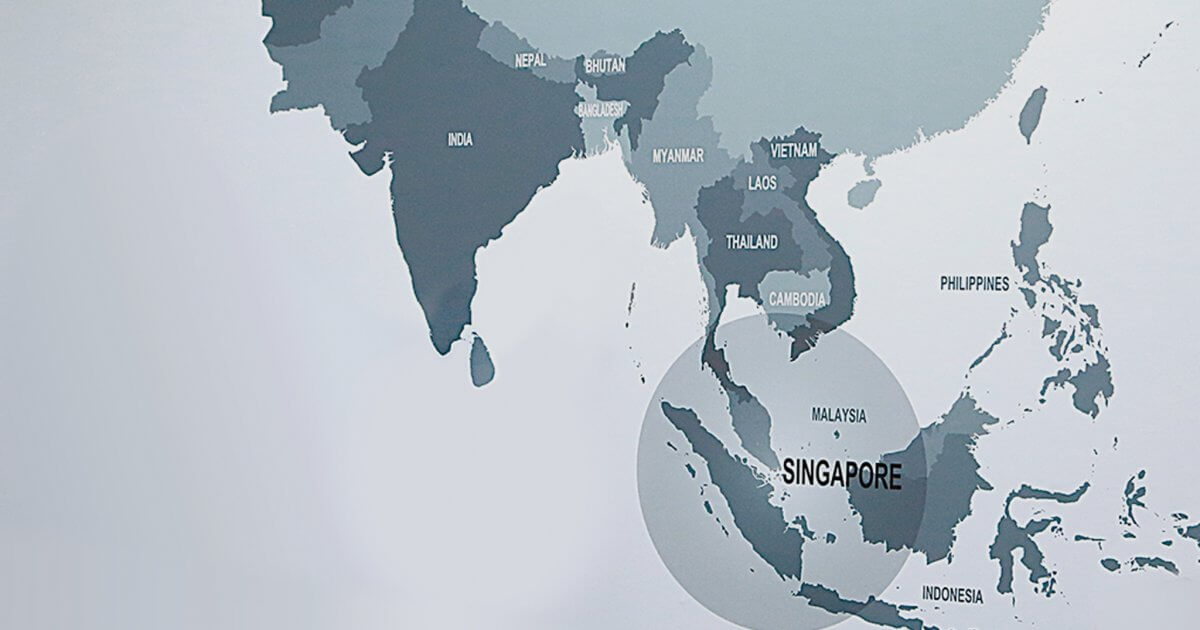
DAIICHI JITSUGYO CO., LTD. (DJK) has expanded its equipment and machinery business globally. Its subsidiary DAIICHI JITSUGYO ASIA PTE. LTD. (DJKA), serving as the head of its Asia group, introduced Sansan across seven countries and 10 branches, centered on ASEAN. DJKA is advancing digital transformation of its business companywide. We spoke with DJKA’s two members about why it focuses on creating a database of business card-based contact information as the first step in this process. We also asked about how the company plans to use Sansan in the future.
Objectives
- Increase productivity through digitization of business card management operations
- Create a shared customer database among DJKA Group
- Strengthen sales capabilities through sharing and visualization of people and connections
Challenges faced
- Individually managed business card and customer data
- Handover difficult when employee is transferred overseas or returns to Japan
- Professional networks and connections not fully utilized for sales activities
Results
- Centralized management of contact information among DJKA Group
- More efficient handover between dispatched and returning expatriates
- Easier and more convenient to access customer data regardless of location
Strengthening Organizational Capability through Technology.
Introducing Sansan as the First Step.
[ Interviewees ]
Mr. Yuji Funawatari
Executive Officer, DJK; Managing Director, DJKA Group
Mr. Hiroki Koumura
HR Executive Administration
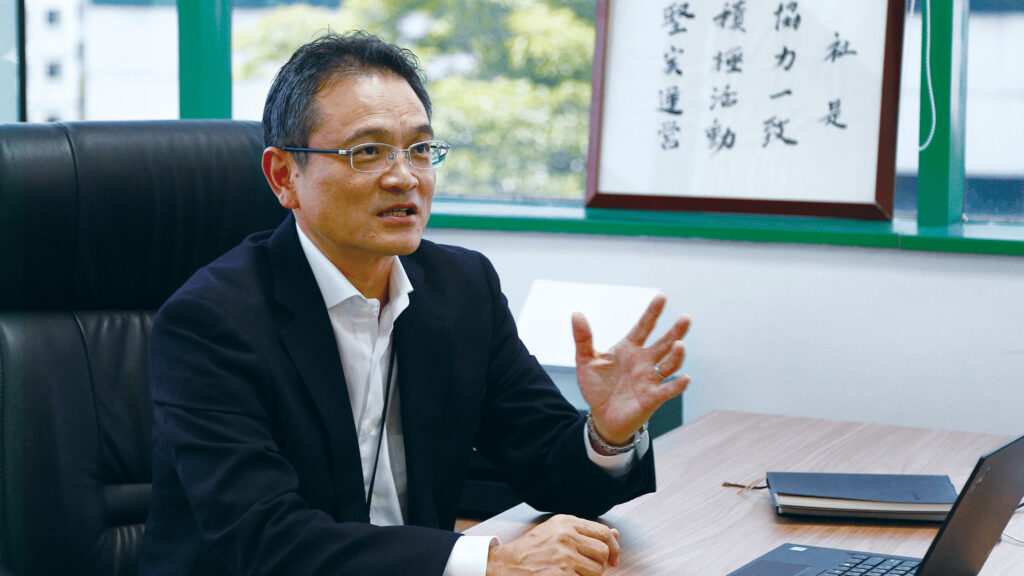
Digitizing business card data was the first step in implementing the technology-based management practices I encountered in Germany at our Asian branches.
– Mr. Yuji Funawatari
Please tell us about how DJK Asia was established and what its business encompasses.
Mr. Funawatari: DJK is active in six business domains and DJKA expanded our operations to cover 10 branches in seven countries: Singapore, Thailand, Malaysia, Indonesia, Vietnam, the Philippines, and India. We’ve set up a system together with local staff at each location so we can quickly and effectively address each region’s needs. Our sales operations are expanding based on an organizational matrix that aligns with specific business divisions with specific areas.
In Asia, our industrial machinery and electronic fields, in particular, are growing substantially. We not only assist Japanese companies with their overseas expansion, we also support local Asian businesses and European suppliers with their operations. With this wide range of operations, DJKA’s business fields keep getting more global in scope.
At the time you introduced Sansan, what sort of issues were you hoping to resolve?
Mr. Funawatari: When I returned to Japan from Germany, I visited with our suppliers in Tokyo right after I got back. The DJK Tokyo office had already adopted Sansan, and it was a great help to me at the time. Using Sansan, I could instantly look up information about a company, the person in charge, and any past transactions before I visited them.
It’s incredibly hard to keep a record of all the details when you visit multiple companies and meet with many people in a single day. There’s a constant flow of new information. Sansan lets me effortlessly look up the information I need, anytime and anywhere. I can also add any new information I acquire. In Japan, I had first-hand experience with Sansan’s convenience and usability. I knew if we introduced it in our overseas offices, it would both improve our daily operations and make handovers much less of a burden. This is why I decided to introduce Sansan at DJKA.

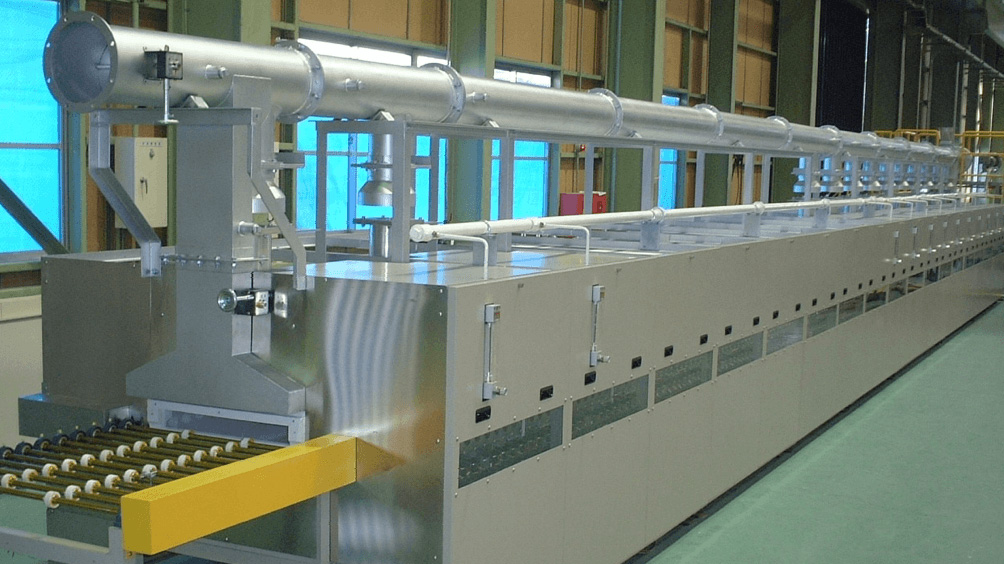
How are you currently using Sansan?
Mr. Funawatari: DJK promotes a style of business that encourages deep personal connections with our customers. This is so they know they can always rely on us to get the job done quickly. We noticed, however, that this often leads to customer data accumulating in the hands of whoever is in charge of an account.
As a trading company, there’s nothing wrong with growing your business based on relationships of mutual trust with your customers. However, when customer data get tied to one person, this can create issues with replaceability and operational efficiency.
When I was stationed in Germany, I learned about different technology-driven management practices and recognized the importance of creating a common database within an organization. So when I was appointed as DJKA’s Managing Director in Singapore, I set out to immediately build this type of information infrastructure, and I started introducing a range of IT tools to get this done. Regardless of what we’re doing, customer information is the foundation for all types of data. This is why I decided to introduce Sansan as the first step in our digital transformation.
Mr. Koumura: Being in charge of general affairs and HR for our group, it was my duty to introduce Sansan companywide. To make sure it was successful across all 10 branches and seven countries, I had to hold an information session at each location and explain the value of sharing business card contact information. I had to do this for all our staff, and that was quite difficult.
Business cards are an important asset to a corporation and if they’re left in drawers, they have no value to anyone but the individual who got them. I explained the benefits of making other people’s business cards accessible and visible to the group and I gave examples demonstrating this.
Sansan is incredibly easy to use and carries lots of convenient functions, but you can’t access these unless you first scan your cards. I focused on communicating to our staff the value in scanned business cards, and I think this was key to companywide adoption of Sansan. I also think it helped that I had worked in sales in Japan. This made me better at demonstrating practical usage and application methods using real-life business scenarios and concrete examples.
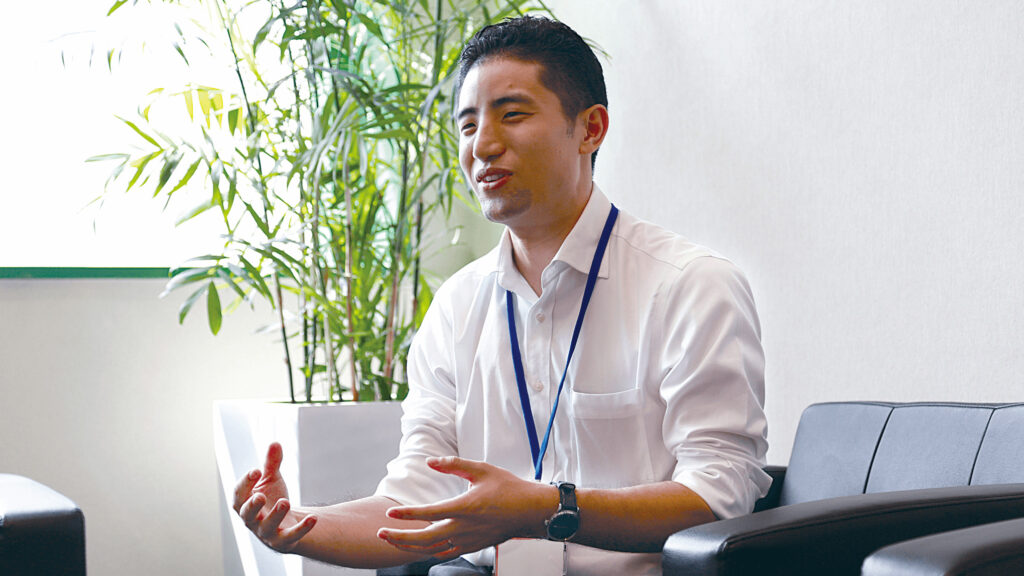
The more data you have, the more business opportunities you can create.
Realizing this, we focused on having all our staff establish a database.
– Mr. Hiroki Koumura
What sorts of results have you seen since you introduced Sansan?
Mr. Koumura: At first, it was hard to get some of the staff on board while we were trying to digitize everyone’s business cards. But now it’s become common practice for employees to scan with Sansan whenever they get a new card. Personnel transfers are common both at our company and among our business partners. And everyone suffers when business ties get cut because of the person in charge changes. This is why it’s essential that accurate and up-to-date information be continually shared among staff to maintain business over the long term.
The first step in connecting the database between the Japan and overseas offices, which was our main objective in implementing the system, was completed. The next step is to figure out how to share and use this massive database collectively – such as with handovers when staff are dispatched overseas or return to Japan. The person leaving their post and the new person coming in can look at the same database and verify the customer data before the transfer. This makes the handover process much smoother.
Being able to more easily share this asset of professional connections among employees has brought some major benefits. Moving forward, things will become even more efficient as we use Sansan’s messaging function and other services to create a record of past interactions with customers, and to get a clearer picture of who they are.
Have you seen any other specific advantages?
Mr. Koumura: When first considering introduction of Sansan, there was an opinion of limiting the database to business cards from sales staff. But we eventually decided to digitize staff business cards across all departments.
The very heart of trading is the ability to mobilize one’s networks and information to connect buyers and sellers. You never know when or where someone will become a stakeholder, or who they may be. By recognizing and sharing each employee’s professional connections as a company asset, we can use this data to create future business opportunities.
The more shared connections a company has, the greater number of business opportunities it can create for itself and its stakeholders. This is why we focused on building a database with all our employees, regardless of their position or department. Personally speaking, as I go on a lot of business trips, I was really impressed by the ease of accessing Sansan’s information using the Mobile App.

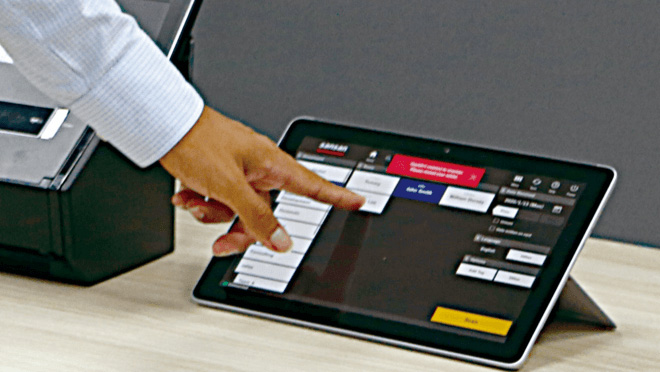
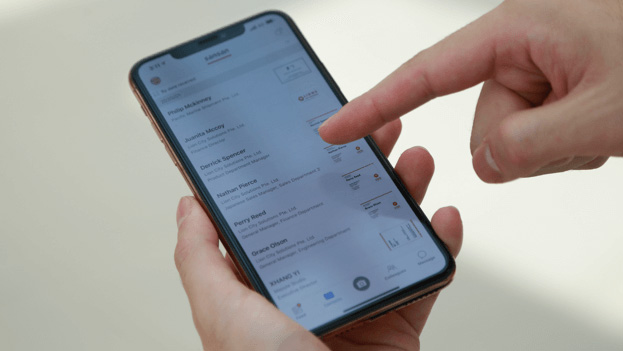
By combining the power of technology with individual instincts and sensibilities, we plan to build an organization capable of harnessing the strong synergy that’s created.
– Mr. Yuji Funawatari
How would you like to use Sansan in the future?
Mr. Koumura: I plan to start using Sansan’s email newsletter function very soon. When our colleagues participate in exhibitions in different countries, they would attach a tag to the business cards they received to indicate at which exhibition they received it and from there, they are able to send bulk e-mails for each tag using their personal email address.
Sending out error-free messages manually takes a huge amount of time and care. Just one mistake in an email address, company name, title, or individual’s name can be fatal. Sansan’s function will let me send out emails with accurate information that I get just from scanning the business card. Sansan has been a huge help in optimizing my workflow after exhibitions, so I really want to introduce and implement this function across all our global branches.
Mr. Funawatari: We’re continuing to bring in new technologies based on the applications we need, and we’ll be integrating these with Sansan to further improve operational efficiency. We’re working to combine each employee’s intuitions and sensibilities with the latest technology to help create a synergistic effect that strengthens the organization.
To achieve this, we’re aiming to develop a framework in which our staff scan any new business cards they receive and, in doing so, ensure that our customer data is constantly up to date.
The multi-dimensional data generated through Sansan gives us insight into each of our business partners’ distinct organizational structures. We’re now looking into how best to combine this data with the detailed information gathered by staff on the ground, and then share the results companywide. We’re also considering how to make better use of our data resources in the future. I can’t wait to see where it all will lead.
